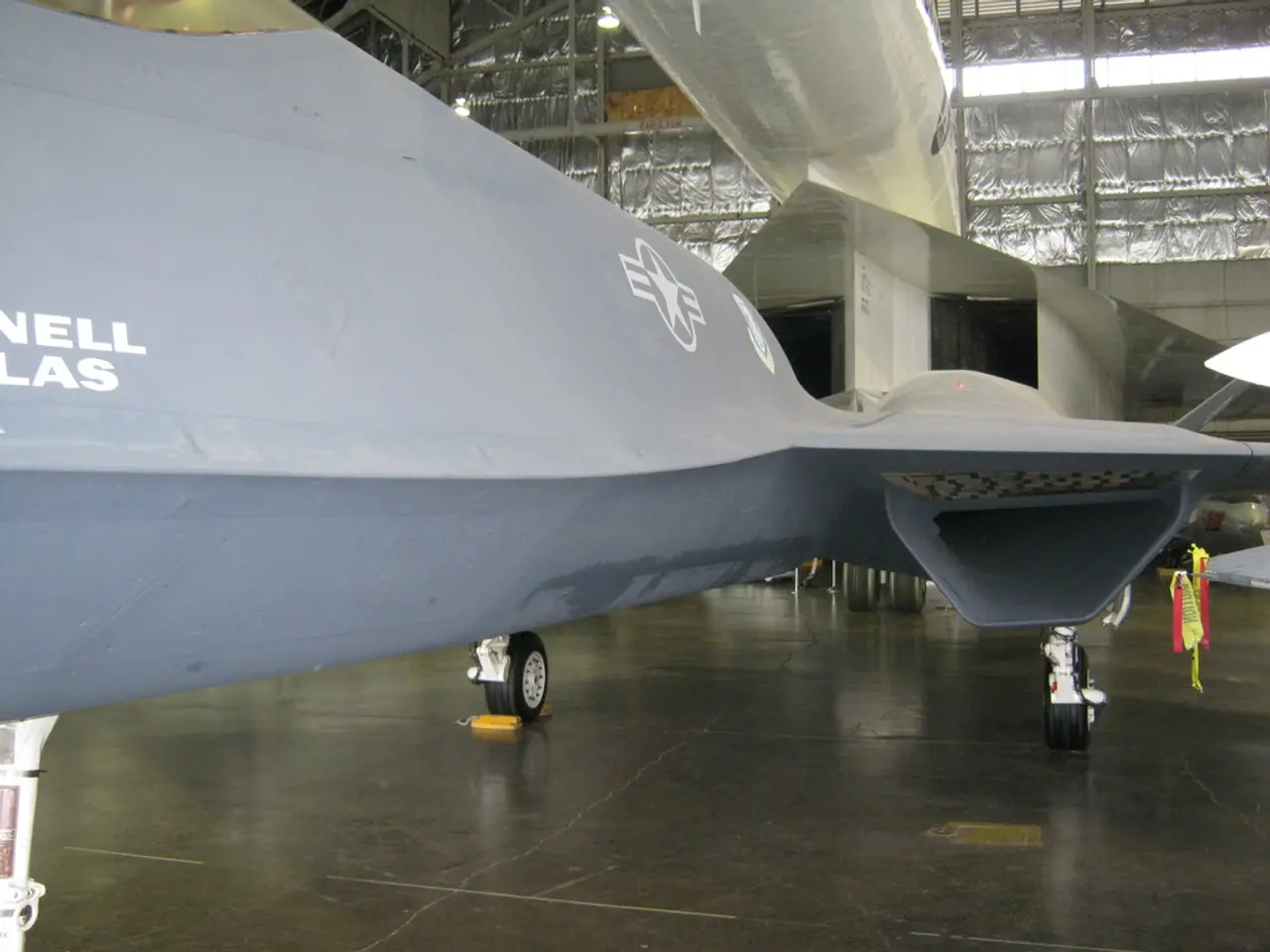Aircraft investment: Advantages and key factors to take into account.
**Resilience and Growth in the Private Aviation Market Amidst Industry Challenges**
The private aviation sector is demonstrating resilience and growth potential amidst the financial challenges and disruptions faced by the broader aviation industry, largely as a result of the Covid-19 pandemic.
**Private Jet Charter Services**
The market for private jet charter services is projected to expand significantly, reaching USD 24.02 billion by 2030, with a compound annual growth rate (CAGR) of 7.95% from 2025 to 2030. This growth is primarily driven by the growing popularity of light-jet services, which are becoming increasingly cost-efficient and appealing to regional clients [1]. Additionally, there is a shift towards sustainability and modernization in the private jet market, with new models being introduced that are SAF (Sustainable Aviation Fuel) ready, aligning with environmental mandates and attracting new clients [1].
**Commercial Aircraft Leasing**
The commercial aircraft leasing sector continues to grapple with supply chain bottlenecks, leading to a shortage of new aircraft. This scarcity has caused lease rentals for used aircraft to increase by at least 20% compared to pre-pandemic levels [2]. In response, companies are focusing on flexible financing arrangements and strategic fleet planning to navigate economic uncertainty and supply chain challenges. Engine leasing is becoming a significant area of focus due to the reliability issues with new-generation engines [2].
**Private Aviation's Rising Valuation**
Private aviation is transitioning from a luxury service to a strategic asset class, offering investment opportunities in companies and related ecosystems. Flexjet's valuation of $4 billion reflects this shift, highlighting the potential for growth in high-end mobility and related sectors [3]. Investors are advised to focus on companies with diversified revenue streams, such as aerospace manufacturers and MRO providers, or consider private equity vehicles focused on luxury mobility [3].
Investors in aircraft financing should prioritize strong credit fundamentals, historical profitability, and robust liquidity and capitalization of borrowers. Younger vintages, which consume less fuel and incur lower costs for the same performance, are also attractive investment options [4].
Airlines are seeking liquidity due to global travel restrictions caused by the Covid-19 pandemic. However, the aviation industry is expected to recover as lockdowns lift and vaccination programs progress [5]. Even the largest national airlines have accepted offers of state support [6]. The yield of privately placed, senior-secured aircraft financings is considered attractive compared to corresponding liquid investment-grade bonds [7].
Banks are primarily providing support to their core customers or where there is a local or regional motivation to do so [8]. Some markets have already shown signs of recovery, with others likely to follow [9]. Leasing companies with available liquidity and no investments made in the last two to three years are able to invest and support their airline customers [10]. These opportunities can achieve robust and uncorrelated value developments compared to mainstream asset classes and other alternative investments [11].
In conclusion, while the aviation industry faces financial challenges and supply chain issues, the private market for aircraft investments shows resilience and growth potential, particularly in private jet charter services and strategic investment opportunities in high-end mobility.
References: [1] [Market Research Report on Private Jet Charter Services](https://www.marketsandmarkets.com/Market-Reports/private-jet-charter-services-market-44655148.html) [2] [Aircraft Leasing News](https://www.aircraftleasingnews.com/) [3] [Forbes: Flexjet Valued at $4 Billion](https://www.forbes.com/sites/merrillbarr/2021/03/01/flexjet-valued-at-4-billion-reflecting-the-transition-of-private-aviation-to-a-strategic-asset-class/?sh=530c318071a5) [4] [Investment in Aviation: Core Assets and Strategies](https://www.muzinich.com/insights/investment-in-aviation-core-assets-and-strategies/) [5] [IATA: Airline Industry Outlook](https://www.iata.org/en/economics/strategy/airline-business-recovery/) [6] [State Aid to Airlines During the Covid-19 Pandemic](https://www.iata.org/en/economics/strategy/state-aid-to-airlines-during-the-covid-19-pandemic/) [7] [Aircraft Financing: Yield and Opportunities](https://www.muzinich.com/insights/aircraft-financing-yield-and-opportunities/) [8] [Banking Support for the Aviation Industry](https://www.iata.org/en/economics/strategy/banking-support-for-the-aviation-industry/) [9] [Recovery of Aviation Markets](https://www.iata.org/en/economics/strategy/recovery-of-aviation-markets/) [10] [Liquidity and Investment Opportunities for Leasing Companies](https://www.muzinich.com/insights/liquidity-and-investment-opportunities-for-leasing-companies/) [11] [Uncorrelated Value Developments in Private Aviation Investments](https://www.muzinich.com/insights/uncorrelated-value-developments-in-private-aviation-investments/)
Economic and social policy should prioritize supporting the private aviation industry, particularly private jet charter services, to foster growth and job creation, given the sector's projected expansion and resilience amidst industry challenges. As the market for high-end mobility transitions to a strategic asset class, investing in aerospace manufacturers, MRO providers, and private equity vehicles focused on luxury mobility could offer attractive returns.








